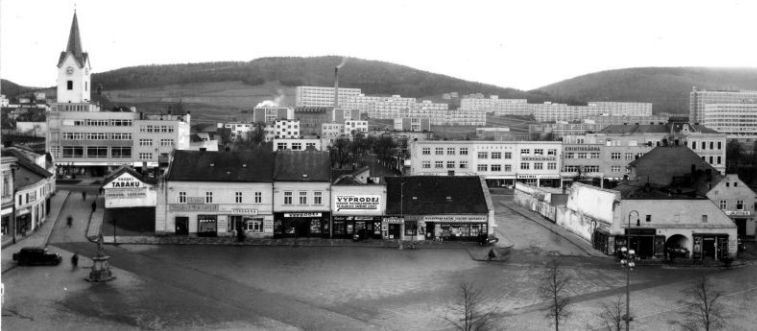
HIstory of Zlín
Zlín's history dates back to the Middle Ages. Deep in the 13th century, a small castle could have been seen on a wooded hill south of Zlín's current centre and some kind of settlement certainly existed in its vicinity. The first historical record of Zlín's existence comes from the year 1322 when it came into the possession of Queen Eliška, the widow of Wenceslas II, the king of Bohemia. Already at that time, Zlín was a township and the centre of quite a widespread feudal estate.
In 1358, Zlín's estate came into the possession of Bishop Albrecht of Šternberk, a prominent figure at the court of Charles IV, King of Bohemia. Two years later the Zlín castle became for many years the seat of part of the Šternberk family. The estate was for a short time ruled by margrave Jobst (Jost) of Luxemburg, but he soon returned it to the Šternberks. In 1397 they largely increased the rights and privileges of Zlín's citizens and thus helped speed up the town's economic development. However, the Šternberks lost much of their property during Hussite wars at the beginning of the 15th century and in 1437 they had to sell their Zlín estate. The whole region then lived for some time under the threat of armed raids by Hungarians fighting against the then Czech king George of Poděbrady. In 1470, King George had his troops encamped in Zlín's vicinity.
The period of suffering was succeeded by a period of peace extending for more than a century. In 1509, Czech King Vladislav granted the citizens of Zlín the right to hold lairs, and further economic rights followed in the next years (1516, 1571 and 1592). The town witnessed flourishing trade and craft, mainly drapery, pottery and shoemaking. The whole of the 16th century was a time of prosperity. The citizens of Zlín built new houses and enlarged their old ones, in 1566 a new church tower was built, in 1582 the town got its school and four years later a new town hall was completed. The Zlín castle underwent extensive Renaissance reconstruction between 1578 and 1580. New villages were being founded in Zlín's precincts and around the year 1600 Zlín was quite a large town and a lively economic centre.
The turn of the century brought a turn in Zlín's fortunes. The decades of prosperity were gone and a long decade of disasters were to come instead. In 1605, the town was raided by Hungarian rebels who plundered it, setting its houses on fire. Yet worse sufferings came with the protracted 30years' war (1618-1648). Repeated incursions by Habsburg armies together with attacks by Polish and Hungarian hordes left the town badly damaged and half-deserted. Many Zlín citizens joined rebels fighting against the Habsburgs and five of them were beheaded after the bloody suppression of a rebellion in 1644.
It took Zlín over 100 years to recover from its wounds. The owner of the estate, count Gabriel Seréni made an attempt at reviving crafts in the town, but his successors stayed isolated behind the walls of their castle and paid little attention to Zlín's needs. The activity of crafts and trade was restored in the 18th century. Zlín could then pride itself on its church, which had been rebuilt in the Baroque style and the newly reconstructed castle. In the second half of the 18th century, the first larger enterprise was established in the town. It was a linen manufactory which operated in Zlín between 1779 and 1780.
Larger industrial enterprises appeared in the town in the mid-19th century. The then owner of the castle, Baron Claudius Bretton, opened a small match factory in Zlín in 1850, and in 1870 a shoe factory of Robert Florimont followed. Both of them, however, soon closed and Zlín continued to exist as a country town. The largest part of its population were petty craftsmen, who were gradually joining their forces and establishing economic and financial associations (in 1868), and also cultural and sport societies. In 1897 Zlín got a new costly school building. The town's connection with the world around it started to improve with the establishment of a post office there in 1848, the introduction of the telegraph in 1886, and above all the new railway built in 1899. All this gave Zlín favourable preconditions for its fast development in the years to come.
The materials have been used from the Brochure (Zlín - The town in gardens), that was published by the Statutory City of Zlín in 2005.
Text: L. Horňáková, P. Novák, Z. Pokluda